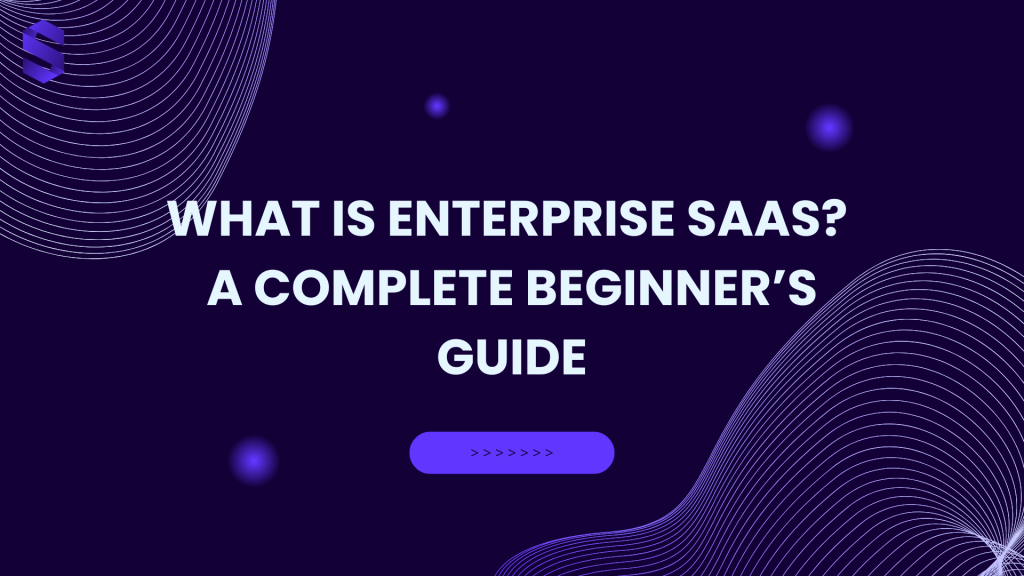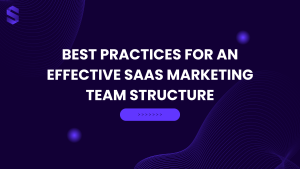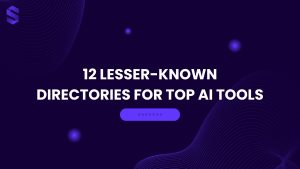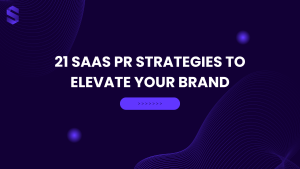Enterprise SaaS, short for Software as a Service, changes how businesses work today. It uses the internet to give businesses apps without needing them on site. This way, you get to use strong software tools without worrying about IT problems.
The growth of Enterprise SaaS has been huge. In just seven years, it has grown by 500%. This shows how big the need is for flexible, growing, and affordable software for big companies.
One big plus of Enterprise SaaS is its pay-as-you-go pricing. This lets businesses pay over time, making top software easier to get. It’s great for small and medium-sized businesses that can’t afford the big costs of old software.
Companies that offer Enterprise SaaS often have long deals with their clients. This builds trust and gives them a steady income. It also lets them grow and improve their services based on what their big customers say.
Key Takeaways
- Enterprise SaaS delivers software over the internet, eliminating on-site installations
- The SaaS industry has grown 500% in seven years
- Subscription-based pricing makes high-end software more accessible
- Long-term contracts foster customer loyalty and steady revenue
- Continuous improvement is driven by direct enterprise customer feedback
- Enterprise SaaS supports both inbound and outbound sales strategies
Understanding Enterprise SaaS
Enterprise SaaS changes how big companies use software. It’s a cloud-based way to meet complex needs. Let’s explore what makes Enterprise SaaS special in cloud computing.
Definition and Overview
Enterprise SaaS is for companies with over 1,000 workers. It’s a cloud model where software is online, not on computers. This method is very popular, with a huge growth in the cloud app market.
Key Characteristics
Enterprise SaaS has special features:
- Advanced Security: Strong protection for company data
- Customization: Made to fit business needs
- Dedicated Support: Help for big clients
- Scalability: Grows with your business
- Analytics: Detailed reports and data tools
These features make Enterprise SaaS great for big companies. Enterprise software through SaaS saves money, deploys fast, and keeps up with new features. It’s a big change for businesses wanting to stay ahead.
“Enterprise SaaS is changing how big companies work, offering unmatched flexibility and efficiency.”
Enterprise SaaS uses cloud tech for flexible solutions. It adapts to business changes and cuts IT costs. This makes it a top choice for companies wanting to work better and faster.
The Evolution of SaaS
Software as a Service (SaaS) has grown fast. It changed how businesses use software. Now, it’s a big part of the tech world.
From Traditional Software to SaaS
At first, software was installed on computers. Cloud computing changed this. SaaS brought software online, making a big impact.
The change took time. It began in the 1960s with shared computers. By the 1990s, web apps led to today’s SaaS. Salesforce’s cloud CRM in 1999 was a big step.
Milestones in SaaS Development
Important events shaped SaaS:
- 2014: Many businesses started using SaaS, leading to “SaaS fatigue.”
- 2020: The COVID-19 pandemic made SaaS even more popular.
- 2023: Companies now use about 130 SaaS apps, up 18% from 2022.
Now, SaaS offers many features and customization. It focuses on security, growth, and making things easy for users. AI and automation make it even better, pushing software forward.
Advantages of Enterprise SaaS
Enterprise SaaS has many benefits for businesses. It offers flexible solutions for different needs. Let’s look at the main advantages of using Enterprise SaaS.
Cost-Effectiveness
Enterprise SaaS saves money compared to old software. You don’t have to pay a lot upfront. Instead, you pay a subscription fee, which helps manage your budget better.
Scalability
SaaS is great for growing or shrinking your business. You can change your subscription as needed. This means you only pay for what you use, saving resources.
Accessibility
With Enterprise SaaS, you can use your apps from anywhere. This makes working from home easier and helps teams work better together.
| Feature | Traditional Software | Enterprise SaaS |
|---|---|---|
| Upfront Costs | High | Low |
| Scalability | Limited | Highly Flexible |
| Accessibility | On-premise | Cloud-based |
| Updates | Manual | Automatic |
| Integration | Complex | Seamless |
Enterprise SaaS also updates automatically. This means you always get the newest features and security. It’s easy to connect with other SaaS apps, making your business run smoothly.
Tired of rigid software solutions that limit your business potential? Our tailored SaaS strategies help B2B companies optimize operations, scale efficiently, and drive sustainable growth. Let’s craft a SaaS plan that fits your enterprise—book a free strategy call today!
Potential Challenges of Enterprise SaaS
Enterprise SaaS has many benefits. But, it also has challenges. It’s important to know these challenges before you start. Let’s look at some common problems that SaaS businesses face.
Data Security Concerns
Keeping data safe is very important. SaaS solutions store your data online. So, protecting it from hackers is key. SaaS providers must use strong security to keep your data safe.
Downtime and Reliability
Having your systems work all the time is crucial. Any downtime can cost a lot. Look for SaaS providers with good uptime promises. Also, have plans ready for when things go wrong.
Integration Issues
Adding SaaS to your current systems can be hard. Problems can make your data hard to share or slow down work. Pick SaaS providers that make it easy to connect with your systems.
The SaaS market is growing fast. It’s expected to hit $232.3 billion by 2024. It’s key to balance the good things about cloud solutions with keeping data safe and systems working well. Knowing these challenges helps you get the most from your SaaS investments while avoiding big problems.
| Challenge | Impact | Mitigation Strategy |
|---|---|---|
| Data Security | Risk of data breaches, compliance issues | Implement encryption, regular audits, compliance measures |
| Downtime | Operational disruptions, financial losses | Choose providers with strong SLAs, create contingency plans |
| Integration | Workflow disruptions, data silos | Assess compatibility, select providers with robust APIs |
Key Players in the Enterprise SaaS Market
The enterprise SaaS market has top saas providers. They offer many cloud services. These leaders keep improving to meet business needs all over the world.
Salesforce
Salesforce is a leader in CRM solutions. They made $34.8 billion in revenue. Their cloud-based CRM helps over 500 million conversations every month.
Microsoft Azure
Microsoft Azure has a wide range of cloud services. With a market cap of $3.42 trillion, they offer Microsoft 365 and GitHub. They help all kinds of businesses, big and small.
Amazon Web Services (AWS)
AWS is a big name in cloud computing. Amazon’s big market presence and new cloud services make them a key player.
| Company | Market Cap | Revenue | Key Offering |
|---|---|---|---|
| Salesforce | Not provided | $34.8 billion | CRM platform |
| Microsoft | $3.42 trillion | Not provided | Microsoft 365, Azure |
| Amazon (AWS) | Not provided | Not provided | Cloud computing platforms |
These leaders are changing the SaaS world. They drive new ideas and set standards. As the SaaS market grows, they will keep leading and shaping cloud services.
Popular Use Cases for Enterprise SaaS
Enterprise SaaS has changed how businesses work. It offers many productivity tools to make things easier and faster. Let’s look at two main areas where these solutions are great.
Customer Relationship Management (CRM)
CRM systems are key for managing customer interactions. Salesforce, a top name in this field, made $33.954 billion in 2022. This highlights how important CRM tools are for all kinds of businesses.
CRM software lets you:
- Track customer interactions
- Manage sales pipelines
- Automate marketing campaigns
- Analyze customer data for insights
Human Resource Management (HRM)
HRM software makes HR tasks easier, from hiring to reviews. These solutions help make processes smoother and make employees happier.
“SaaS applications are crucial for business success.” – 73% of technology experts in a global study
HRM software has important features like:
- Recruitment and onboarding
- Payroll management
- Performance tracking
- Employee training and development
| SaaS Category | Example | 2023 Revenue |
|---|---|---|
| CRM | Salesforce | $33.954 billion |
| Video Conferencing | Zoom | $4.527 billion |
| Productivity Suite | Google Workspace | $305.63 billion |
The SaaS market is expected to hit $374.50 billion by 2028. It’s clear these solutions will keep shaping business operations in the future.
Enterprise SaaS vs. Traditional Software
The software world has changed a lot lately. Enterprise SaaS and traditional software are two different ways to manage IT. Let’s look at how they compare in terms of licensing, pricing, deployment, and upkeep.
Licensing and Pricing Models
SaaS uses subscription models, while traditional software charges a one-time fee. With SaaS, you pay a monthly or yearly fee. This fee changes as your needs grow. Traditional software costs a lot upfront.
The SaaS market is growing fast. It was worth $273.55 billion in 2023. It’s expected to hit $1,228.87 billion by 2032.
Deployment and Maintenance
SaaS is cloud-based and easy to use. You can access your tools from anywhere, which is great for remote teams. Traditional software needs to be installed on each device or server. This can take a lot of time and may need a dedicated IT team.
Maintenance is another big difference. SaaS providers take care of updates and security patches for you. With traditional software, your team has to handle these tasks. This can be hard on your IT team and budget.
| Feature | Enterprise SaaS | Traditional Software |
|---|---|---|
| Pricing | Subscription-based | One-time licensing fee |
| Deployment | Cloud-based | On-premises |
| Maintenance | Provider-managed | User-managed |
| Scalability | High | Limited |
SaaS is flexible and cost-effective. But traditional software might be better for industries with strict data privacy rules. Your choice depends on your specific needs and SaaS conversion rate goals. Think about your budget, IT team, and growth plans when choosing between these options.
Considerations for Choosing an Enterprise SaaS Solution
Choosing the right Enterprise SaaS solution is key for your business. The global digital transformation spending is set to hit $2.3 trillion by 2023. It’s important to make smart choices. Let’s look at what to consider when you’re picking software.
Business Needs Assessment
First, figure out what your business needs. Find out what’s not working well and what you want to achieve. This is crucial because SaaS now makes up 27% of all software budgets, as the Flexera 2021 State of Tech Spend Report says.
Feature Comparisons
When looking at Enterprise SaaS options, focus on what you need. Look for strong security, good collaboration tools, and the ability to customize. These things make some SaaS solutions better than others.
- Scalability to support your growth
- Integration capabilities with existing systems
- Security measures to protect sensitive data
- Customization options to tailor the solution to your needs
- Pricing models and long-term cost implications
Remember, doing your homework is important. The average UK business does 27.5 IT projects a year, and 36% fail. By carefully choosing, you can pick a SaaS solution that helps your business grow.
Implementation of Enterprise SaaS
Putting enterprise SaaS into action needs careful planning. It involves several steps for success. Let’s look at what’s important in this process.
Planning and Strategy
A good plan is key for software success. Begin with SMART goals. These are specific, measurable, achievable, relevant, and time-bound.
Think about these things in your plan:
- Data migration strategy
- System integration with existing tools
- Resource allocation
- Timeline for implementation
Training and Adoption
Getting users to adopt the system is crucial. Create a detailed training program. This could include:
- Self-guided product demos
- Live training sessions
- Detailed help documentation
Change management is also important. Talk about the system’s benefits to employees. Also, listen to their worries.
Effective SaaS implementation takes ongoing work. Regular checks and monitoring are key. With good planning, training, and change management, you can get the most from your SaaS.
| Implementation Step | Key Focus | Outcome |
|---|---|---|
| Planning | SMART goals, resource allocation | Clear roadmap for implementation |
| Training | User adoption, skill development | Confident and proficient users |
| Change Management | Communication, addressing concerns | Smooth transition to new system |
Customization and Flexibility
Enterprise SaaS solutions are great because they fit your business needs. You can change how the software looks, works, and reports. This makes sure the software helps you, not the other way around.
Tailoring Solutions to Business Needs
With SaaS, you can make your digital tools fit your business perfectly. This makes your team work better and faster. Customization helps users use the software more.
Integrating with Existing Systems
It’s key to make new SaaS solutions work with your old systems. Most SaaS has tools to connect with your systems. This keeps your data flowing smoothly.
- Improved user experience
- Enhanced productivity
- Better alignment with business goals
- Increased ROI
| Aspect | Custom Software | SaaS |
|---|---|---|
| Initial Cost | Higher | Lower |
| Deployment Time | Longer | Faster |
| Customization | Extensive | Limited |
| Maintenance | In-house | Provider-managed |
SaaS is flexible, but it’s also good to keep some standard features. By customizing your SaaS and connecting it with your systems, you can make a strong digital team. This team will help your business grow.
Future Trends in Enterprise SaaS
Enterprise SaaS is changing fast. It’s growing a lot, with a market value of $908.21 billion by 2030. This growth comes from new tech and how we work.
AI and Automation
Artificial intelligence is changing Enterprise SaaS. AI helps make decisions and makes work easier. By 2025, 85% of business apps will use SaaS, up from 70% in 2023.
Automation is also big. SaaS tools are getting better at doing tasks on their own. This is true for customer success platforms, which will grow to $31 billion by 2026.
Remote Work Solutions
Remote work is making cloud tools more popular. SaaS companies are making tools for working from anywhere. These tools help with talking, managing projects, and working together online.
| Trend | Projected Growth | Impact |
|---|---|---|
| AI SaaS | Significant growth sector | Enhanced automation and decision-making |
| Remote Work SaaS | Heightened demand | Improved collaboration for distributed teams |
| Vertical SaaS | Rapid growth expected | Industry-specific solutions (finance, education, healthcare) |
As Enterprise SaaS keeps changing, businesses need to keep up. This helps them stay ahead in the digital world.
Measuring Success with Enterprise SaaS
It’s important to check how well your Enterprise SaaS works. By watching key numbers and always trying to get better, you can make sure it’s worth it.
Key Performance Indicators (KPIs)
To see if your Enterprise SaaS is doing well, look at these important KPIs:
- Customer Acquisition Cost (CAC): This shows how much it costs to get new customers.
- Customer Lifetime Value (CLV): It tells you how much money customers bring in over time.
- Churn Rate: This shows how many customers you keep by tracking those who leave.
- Revenue Churn: It shows how losing customers affects your money.
- CAC-to-LTV Ratio: This compares how much you spend on customers to how much they make.
Continuous Improvement Strategies
To make your Enterprise SaaS better, try these things:
- Regular Performance Reviews: Check how your SaaS is doing every month or quarter.
- User Feedback Analysis: Listen to what users say to find ways to get better.
- Data Analytics: Use tools to understand your numbers better.
| Metric | Importance | Target Range |
|---|---|---|
| Months to Recover CAC | Measures time to cover acquisition costs | 6-12 months |
| Customer Engagement Score | Indicates brand interaction quality | 7-10 out of 10 |
| Qualified Marketing Traffic | Identifies high-intent visitors | 20-30% of total traffic |
By focusing on these numbers and using data, you can keep making your Enterprise SaaS better. This way, it will meet your business goals and give you the most value.
Case Studies of Successful Enterprise SaaS Integrations
Enterprise SaaS success stories show how cloud-based solutions help many industries. These stories share best practices and lessons from real use.
Examples from Various Industries
Here are some big success stories in using enterprise SaaS:
- HubSpot: This platform uses content and custom experiences to attract users. It also offers free courses, helping it grow and keep users engaged.
- Notion: A tool for managing projects with a block-based system and AI. It has over 4 million users worldwide and is worth $10 billion.
- Salesforce: With $26.49 billion in revenue, Salesforce makes almost all its money from SaaS tools. This shows how powerful SaaS can be.
Lessons Learned
These examples teach us important lessons for successful SaaS use:
- Creating content is key: 57% of SaaS companies see it as a top marketing strategy.
- Case studies are great for sales: Almost 40% of SaaS marketers find them very effective.
- Use many marketing methods: Try social media, emails, webinars, PR, and customer stories.
- Focus on onboarding: ChiroTouch uses videos and clear messages to help new users.
- Use data to guide your actions: Outreach.io grew by focusing on data-driven decisions.
By following these tips, you can get the most out of SaaS solutions. This will help your business grow in the digital world.
| Company | Annual Revenue | Team Size | Key Feature |
|---|---|---|---|
| Yellow AI | $36 million | Not specified | AI-powered chatbots |
| Customer.io | $49.9 million | 305 | Customer engagement platform |
| ConvertKit | $25 million | 82 | Email marketing for creators |
| dealpad.io | $20 million | 12 | Sales engagement software |
| Tithely | $15.6 million | 180 | Church giving and engagement tools |
Legal and Compliance Issues
Understanding software licensing and regulatory compliance is key for SaaS success. The industry is growing fast, with a forecast of $232 billion by 2024. Knowing the legal rules is more important than ever.
Understanding Licensing Agreements
Software licensing in SaaS is different from old ways. You don’t own the software, but use a service. This change affects how you use and share the software. Important things to think about:
- Usage rights and limits
- Payment terms and renewal rules
- Service level agreements (SLAs)
SLAs promise 99.9% uptime. This is very important because cloud problems can cost a lot. Reading these agreements well helps avoid big problems later.
Data Compliance Regulations
Data protection is a big deal in SaaS. With more cyberattacks and data breaches costing $4.45 million in 2023, following rules is a must. Some important rules include:
- GDPR for EU data protection
- HIPAA for healthcare info
- SOC 2 for cloud storage safety
Being compliant isn’t just to avoid fines. It’s about gaining trust. When you make your SaaS marketing plan, showing you care about data protection can really help.
To deal with these complex issues, think about getting a Chief Compliance Officer. They can make sure your SaaS follows all rules. This protects your business and your customers’ data.
Community and Support Resources
Enterprise SaaS providers give many tools for smooth use and happy users. These include user communities, tech support, and knowledge bases. Let’s look at these and why they’re good.
Online Forums and User Groups
User communities are very important for Enterprise SaaS help. They let users share knowledge and solve problems together. For example, Microsoft Power BI’s community grew a lot, saving over $1 million a month.
- Increased brand awareness and customer loyalty
- Revenue growth through customer retention
- Valuable feedback collection
- Cost reduction in support
Official Customer Support Channels
Technical support teams help with tough problems and give insights to product teams. Important parts of official support include:
| Aspect | Details |
|---|---|
| Self-service options | 70% of customers prefer finding answers independently |
| Support metrics | Number of tickets, average response time, customer satisfaction |
| Impact on growth | 70% of chat users become paying customers |
Knowledge bases are key for detailed guides, less tickets, and happier customers. By focusing on user engagement and personal touch, SaaS companies can keep more customers and make more money.
Our support organization has been transformed by the community, providing customers with expert information efficiently and effectively. – Qlik
Good community and support tools are essential for successful Enterprise SaaS. They make users happy and help businesses grow.
Final Thoughts on Enterprise SaaS
Enterprise SaaS is changing how businesses work. It’s key for companies to use B2B SaaS software. This helps them grow and stay ahead.
The Importance of Strategic Adoption
Using Enterprise SaaS wisely is important. It helps handle lots of data well. When picking SaaS pricing, think about your goals and what users need.
It’s also important to make software that everyone can use. This means designing it with the user in mind.
Embracing Innovation for Growth
Using Enterprise SaaS can make customers happier and help make better choices. To keep up, focus on keeping data safe and making software that grows with you.
Listening to what users say is also crucial. This way, you can always get better. It helps you deal with high costs and meet investor needs.
Success with Enterprise SaaS depends on using new tech and being creative. By doing this, your company can thrive in the digital world.
Enterprise SaaS is shaping the future of business efficiency, scalability, and innovation. Don’t get left behind—whether you’re looking to implement, optimize, or scale your SaaS solutions, we’re here to help. Let’s discuss your SaaS strategy—contact us today!
FAQ
What is Enterprise SaaS?
Enterprise SaaS is cloud-based software for big companies. It lets them use apps easily and pay by subscription. This way, they don’t need to install software themselves, saving time and money.
How has Enterprise SaaS grown in recent years?
Enterprise SaaS has grown a lot, by 500% in 7 years. It’s changing how businesses work in many fields.
What are the key characteristics of Enterprise SaaS?
Enterprise SaaS has strong security, can be customized a lot, and has good support. It also has data analytics and SLAs for big companies. It’s different from regular SaaS because it’s more customizable and secure.
How does Enterprise SaaS differ from traditional software?
Enterprise SaaS uses a subscription model, unlike traditional software’s one-time fees. It’s cloud-based, so you don’t need to install it. This saves money and makes it easier to use and grow.
What are the major advantages of Enterprise SaaS?
Enterprise SaaS saves money, grows with your business, and is easy to use from anywhere. It also updates automatically and can be customized for your needs.
What challenges might businesses face when adopting Enterprise SaaS?
Businesses might worry about data security, downtime, and integrating with old systems. To solve these, you need strong security, good SLAs, and a plan for integration.
Who are the major players in the Enterprise SaaS market?
Big names include Salesforce, Microsoft Azure, and Amazon Web Services. They lead in innovation and offer a wide range of services.
What are some popular use cases for Enterprise SaaS?
It’s used for CRM, HRM, ERP, BI, and SCM. These tools help streamline business functions and make operations more efficient.
How should a company choose an Enterprise SaaS solution?
First, figure out what you need. Then compare features, scalability, security, and how it fits with your business. Look at vendors, try demos, and check their support.
What does implementing Enterprise SaaS involve?
It needs a good plan, including moving data, integrating systems, and training users. A solid plan will outline steps, timelines, and who will do what.
How customizable is Enterprise SaaS?
It’s very customizable to fit your business. You can change how it looks, works, and reports. Integrating with other systems is also key.
What are some future trends in Enterprise SaaS?
Expect more AI, better data analytics, and focus on user experience. There will also be more SaaS for specific industries. Remote work will drive demand for cloud tools.
How can businesses measure the success of their Enterprise SaaS implementation?
Look at user adoption, ROI, and how it improves productivity. Keep improving by reviewing performance, listening to users, and using data for insights.
What legal and compliance issues should be considered with Enterprise SaaS?
Understand licensing agreements and follow data protection laws like GDPR. Make sure SLAs meet your needs and follow standards. Also, consider data privacy and sovereignty.
What support resources are available for Enterprise SaaS users?
There are forums, user groups, and official support. These offer help, tips, and troubleshooting. Many providers also have knowledge bases and support teams.
Why is strategic adoption of Enterprise SaaS important for businesses?
It’s key for growth and staying competitive. It brings new tech, boosts efficiency, and helps adapt to changes. Using SaaS can improve customer service, decision-making, and business agility.










